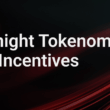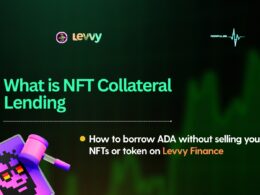If you’ve left the centralized exchanges, and are now sitting there staring at your wallet with your ADA balance looking back at you without quite knowing what to do about it, you’ve found the right article!
(I’ve also written other posts if you’re just starting to get your feet wet with self-custody and are trying to get a handle on wallets and getting off exchanges)
As much as I’d love to just tell you to delegate to FLAN and call it a day, I don’t think that’ll cut it. I don’t want to trick you into delegating to FLAN because the big scary world of stakepool delegation chased you away and you fled back to something that seemed safe.
That goes counter to what I’m trying to build here. When and if you delegate to FLAN, I want you to do so because you want to support what me and my friends working behind the scenes are doing; or if you want to benefit from all the goodies we have in store for you.
As such, in this article, we will be covering the basics of staking and how to find a good stakepool.
The Basics
Before we tackle anything else, we have to explain stakepools quickly. In short, stakepools are a collection of computing devices that together can process transactions and receive rewards for doing so. At the time of writing, there are about 3,200 stakepools.
Normal users can tell the network that they wish to assign their wallet holdings to a stakepool operator (SPO). This is known as “staking”, and how much ADA a stakepool has assigned to it affects the frequency of how often they can process transaction blocks, and therefore receive rewards. As an incentive by SPO to attract staking delegation, they share a portion of their income with the users who have vouched for them.
It bears saying though that the system is designed so that over a long enough time, all stakepools give the same return on investment. Furthermore, and this is crucial to stress, as it’s a very unique feature in Cardano: Staking does not require you to give up control of your ADA, and carries no real risk for you (other than the one already inherent in holding ADA).
Staking is essentially telling the network that you would like an SPO to receive more blocks and thus have a higher influence on Cardano as a whole. How seriously the network takes this request depends on how much ADA is in your wallet.
In order to start, you have to spin up your wallet. Since you’re a newbie, chances are that you’ll be using the Yoroi light wallet, as it’s the default option and it’s the one that is the likeliest to be recommended. I use it myself at times as I’m paranoid and there are few other wallets out there that are open source, though it is admittedly not the most functional wallet out there. In either case, it’ll take a while to load up.
While it does, you can look at this screen, which you can find after you click on the “Delegation List.” Now, if you’re anything like me, this should scare the absolute crap out of you.

There’s a bunch of different metrics, a huge list of literally thousands of pools to choose from and it’s very easy to get overwhelmed. Nobody will blame you if you do get frustrated and pick the first one at random.
It’s unfortunately what caused certain pools and their sequels to grow gigantic, despite having no marketing or anything particularly unique. Fortunately, their influence is diminishing as people are getting savvier, though early and stupid advantages like being literally the first on the list are still quite important.
Now, in the following sections, we will be addressing each one of the metrics and explaining their importance in determining a good pool.
But prior to that, it’s worth mentioning that when you first delegate with a wallet it’ll take 4 epochs (20 days) before you see any rewards, and thereafter, whenever you decide to switch to another pool, it takes two epochs before the stake is switched between them.
Though this is a bit of an annoying restriction, it’s done to give SPO at least some stability from week to week. It’s also there so as to make switching between stakepools easy, but not an arbitrary choice that can be changed at a moment’s notice.
This is why in stakepool tracking websites like adapool.org you’ll see two metrics – active stake and live stake. The active stake is what is currently assigned to a stakepool, and live stake is what the stake would be if there wasn’t this 2 epoch transitional period.
With that out of the way, we can go on to explain the different metrics.
Staking Pool
This column might seem like the most obvious bit as it just looks like there’s a stakepool’s name. But don’t be fooled, there is some nuance to be found here.
First, there’s the ticker, this is the text within the brackets, such as [FLAN]. It’s the shorthand way of finding a pool and works much as a stock ticker would.
Then there’s the greyed out alphanumeric string of text beside the name. This is known as the PoolID, and is a code meant to showcase the provenance of a pool. In other words, due to the permissionless nature of the system, you can have pools with the exact same name and ticker, but what you can’t copy is the PoolID.
This PoolID is randomly generated at the time of registering a pool. It is typically displayed in some portion of the website. While not common, it can happen that scammers try to take advantage of high-in-demand pools by pretending to be them.
Always check social media to be sure that you have the right ticker, and if there are similar ones, refer to the official PoolID, which should be easily found in official documentation.
ROA
ROA is an acronym that means to Return on ADA. This is the rate of return of the pool throughout its lifetime. As in, if you had staked ADA at the pool’s inception, this would be your percentual return.
This is a bit of a misleading number though. Over a long enough time, stakepools are designed to average out the exact same as every other pool. However, the frequency at which blocks are minted and users are rewarded for their stake is dependent on the amount of ADA associated with the pool (pledge + live stake).
In other words, small pools generate infrequent but huge rewards and large pools get frequent but small rewards, but if the pools are active for long enough, it shouldn’t matter which one you delegate to. A suggestion is that if you are planning on moving your ADA frequently between wallets, then a large pool is better as you’re virtually guaranteed to mint blocks.
On the other hand, a small pool is better if you’re planning on staying for the longer term. Not only will you be helping decentralization, but you might luck out and have a higher than average return.
The magic dividing line is around 1m-1.5m ADA. Anything under that mints blocks infrequently, while everything above that is likely to mint a block every epoch (period lasting five days, the start of which marks when rewards are calculated and the end is when they’re distributed).
The expected return of pools will vary year by year, as we’ll increasingly rely more on transaction fees than reserve disbursements. However, until we only rely on transaction fees, the returns are more or less predictable. At the moment, the expected ROA is around 4.6%.
Put simply, any pool with ROA under that number is likelier to outperform that benchmark if you’re freshly delegating to them, provided that you stay with them and they don’t go out of business. Conversely, if it’s beyond that number, the pool is likelier to underperform for the foreseeable future, until the ROA matches the predicted one.
Share / Pool Size
There are only ever going to be 45bn ADA, so it’s possible to calculate the percentage of the total supply that a stakepool represents, this is what the share metric shows. The share percentage doesn’t have a major use for the average user, and frankly, I’d be up for just keeping pool size as a metric, as that’s vital data. However, it’s also worth mentioning that pools aren’t infinitely scalable.
While it is technically possible to keep putting an infinite amount of ADA into a pool, there’s a point where introducing even a single ADA is counterproductive and decreases rewards instead of increasing them.
The exact point at which a pool reaches saturation changes over time but it’s roughly around 63m-67m. I would strongly advise you not to delegate to a pool anywhere near that size, the one exception being when there’s an Initial Stakepool Offering (we’ll get to them in detail some other time) and the original entity has said it’s fine and won’t affect the tokens you get. In those extenuating circumstances, it’s worth asking in their official Telegram groups on the specifics though.
Otherwise, if you remain delegated past the point where the pool is saturated, then you don’t get any rewards, and you’re actively losing money.
The main utility of this column is seeing the pool size, and the main things you’re looking for in regards to pool size are:
- If it’s below or above 1m -1.5mADA, due to the reasons mentioned in the ROA section; and
- Whether the pool is nearing saturation, as in if it’s around 63m-67m.
Costs
Here’s the most contentious of the bunch. Given that running stakepools requires both specialized equipment and technical knowledge, SPOs receive a reward in recompense for their services every epoch.
It bears saying that this is paid from generated rewards, and is paid collectively by everyone participating in the stakepool. So by the time you receive the rewards, the costs have already been paid and you don’t have to do anything.
This is divided into two portions – a fixed fee of 340 ADA and a variable, percentage-based fee typically ranging between 0%-3%.
The controversial aspects depend on whom you ask. On the one hand, some say that the fixed fee should be abolished altogether, as it allows inefficient operations to continue existing. While its supporters say that the fixed fee helps small pools cover some of the not insubstantial stakepool running costs.
Then we have the percentage-based fee. This is what trips up people the most. When newbies enter this space, they’re just looking for the lowest fee available, screw everything else.
This is an understandable mindset when you view every stakepool as infinitely replaceable.
It’s worth mentioning that most stakepools are losing money due to insufficient stake and thus they’re not minting blocks. As such, in desperation, they often lower fees in an effort to market their pool. This is likely not sustainable, so if you stake with them you’re often getting on an already sinking ship.
Besides that, you shouldn’t view stakepools as infinitely replaceable, but as community hubs. Over time you realize that your stake matters and helps incentivise the type of development on Cardano that you want to see.
Even technically unsophisticated people can get a stakepool up and running in an afternoon. But the complexity curve quickly goes up if you want to do more with it. If you want delegators to not miss blocks, or to defend the pool from cyberattacks, it does take some effort.
For the FLAN pool specifically, there is me, who is writing content basically from dawn to dusk on a daily basis and there’s a software engineer friend in charge of the backend. He is constantly monitoring the pool and protecting it from a security standpoint. (You should see his office, it looks like something out of the Matrix, with monitors flicking information 24/7.)
So, while we both love Cardano, and want to see it succeed, we’re not willing to go into debt for its sake and we have put a fee that we think is fair and reasonable given our operating costs and the labour we put in. At some point, we want to build on Cardano on a full-time basis – I want to stop taking clients and work solely for you , and my friend wants to build stuff on Cardano for the community. This can only happen with your support, as neither of us is wealthy and we still need to pay rent.
The broader point is that you should view holding and staking ADA as a responsibility that goes beyond just squeezing an extra percent. Support people who you think are doing a good job for the ecosystem and ADA itself will end up being far more valuable over time as a consequence.
Pledge
This metric is typically seen as how much “skin in the game” people have. It’s how much ADA stake an SPO has put into their pool. And while official documentation seems to imply that it majorly matters in practice it doesn’t.
This particular variable is given far too little power in determining the probability of assigning a block for stakepools to mint. It has been argued that the reason it isn’t a particularly punishing metric is to incentivise new entrants and people from lower means, and especially the third world, to be able to participate without major hurdles.
Otherwise, it might become a “rich get richer” situation.
Yet because pledge doesn’t matter when we come right down to it, this incentivises people with a powerful marketing arm to open many pools to saturation; as they don’t really need to show any major commitment to the network to have the right to open a stakepool.
I believe this is the likeliest metric to change in the near future; especially as some have argued that increasing the importance of pledge is the only means by which we’ll incentivise the different stakepool operators to work for the network, instead of prioritizing their own financial interests.
Blocks
A block is a collection of transactions that have been executed and logged on the network. An SPO’s role is to collect these transactions and group them into a block. When a block gets minted it gets added to the blockchain (a collection of blocks that are chronologically organized), and becomes a permanent record of transactions.
This is what keeps the network operational and active, so SPOs get rewarded for their service, and a portion of these rewards then gets passed on to their delegators, as they made it likelier for the pool to receive the task of minting the block in the first place.
In other words, think of a block as a piñata that gives you goodies when it gets hit enough. However, the ultimate payout inside the piñata is unknown as it’s ruled by a horrible looking formula that changes with every block and epoch.
If a pool is getting at least 1 block per epoch, delegators will get rewards on a consistent basis and the stakepool is likely over 1m-1.5m ADA in size.
Conclusion
Find someone who you think is doing something cool while being trustworthy, reliable, honourable & fair and stake with them. This will not only help support their own projects and thereby benefit Cardano as a whole, but you will help decentralization.
Do be on the lookout for multiple pool operators, which are people or entities that have several pools as their original one reached saturation. I didn’t go into it at length here as I’ve already written about it extensively elsewhere, but the gist ist that they’re enriching themselves at the cost of Cardano as a network.
If you believe in Cardano, go somewhere else where an extra ADA would meaningfully make a difference in their capacity to help the network. Ideally, help small pools that you think are a boon to Cardano.
Remember that Cardano is a Proof of Stake blockchain where each ADA holder is a co-owner in the network. You should behave with that in mind. Don’t think about short term gains, but long term value. Cardano aims to make everyone meaningful participants and beneficiaries of the network!
If you’re in Crypto or TradFi looking for someone to ghostwrite content for you or consult regarding your content strategy, please do not hesitate to message me. I’m a full-time content producer.
In either case, if you delegate to [FLAN] you can win exclusive Flan Clan NFTs, along with other surprises. Delegating to FLAN helps support my content, and widen the amount of material available to you guys!
Finally, if you would like to more directly support this project and help me pay rent, I’ll also pass on the tip hat:
- ADA wallet address — addr1qxfgs44d763uuw4hy6qatx383v9mmrrm6qazay6eren9sp5r2usruecwv33lp2t2nqp4ss6hrc9ac8yd2klxnsfnxz2qw3su4s
- Adahandle — $flantoshi
In the unlikely scenario where you haven’t already, feel free to join the community over at @flantoshi on Twitter.










